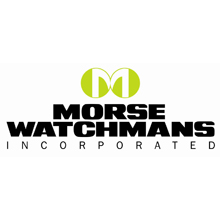 |
| Operation of the system was converted from keypad usage to identification key cards |
Working closely with the client, Morse Watchmans has upgraded and expanded the KeyWatcher® key control and management system at the University of California, San Francisco (UCSF). In addition to expanding the system to include more than 25 key control cabinets, operation of the system was converted from keypad usage to the University’s identification key cards. The cabinets were networked to provide central control and transmission of all activity back to a dedicated central server.
According to UCSF locksmith Bob Norton, the changes were made to address the large number of employees who are issued keys and the subsequent potential for lost or duplicated keys. “With as many doors as we have and as many employees eligible to hold keys, the order of magnitude for chaos is almost inconceivable,” he said. “Morse Watchmans was there to assist us and provide the engineering support we needed to modify the system in order to meet our needs.”
The KeyWatcher automated key control system is designed to release keys only to pre-authorised users and to record and track all access activity. Changing the system to require a UCSF identification card to access the key cabinet builds on this aspect and further enhances the integrity of the system. With this integrated solution, the system is centrally managed allowing changes in authorisation to be made remotely and immediately.
The key control system easily accommodates storage of the master keys in the KeyWatcher cabinet, which are attached to custom designed key rings. With thousands of door keys to manage, Mr. Norton says it was more practical and realistic to store only the master keys in the KeyWatcher cabinets.
The network capability permits Mr. Norton to receive transaction data as it occurs or on a regularly scheduled basis, including keys in use and overdue keys, inconsistent key usage and an audit trail for every user or key. For added user convenience, keys can be returned randomly to any open location in the cabinet. The illuminated key slots make accessing and returning keys easier and the system cannot be manipulated or easily tampered with.
“Keys are accessed hundreds of times a day throughout the four campuses and the KeyWatcher system dutifully records and transmits each activity,” adds Mr. Norton. “Copies of activity reports are even supplied to other departments for comparison to time and attendance reports.”
Unique in its mission for focusing only on graduate school, hospitals and research, the University of California, San Francisco is recognised both nationally and internationally as a top tier institution. Its hospitals are ranked in the country’s top ten and its dental, nursing and pharmacy programmes are some of the best in the nation. The University is spread over four separate campuses throughout the city, with a fifth under construction, and has a staff of almost 20,000 employees.
Working closely with the client, Morse Watchmans has upgraded and expanded the KeyWatcher® key control and management system at the University of California, San Francisco (UCSF). In addition to expanding the system to include more than 25 key control cabinets, operation of the system was converted from keypad usage to the University’s identification key cards. The cabinets were networked to provide central control and transmission of all activity back to a dedicated central server.
According to UCSF locksmith Bob Norton, the changes were made to address the large number of employees who are issued keys and the subsequent potential for lost or duplicated keys. “With as many doors as we have and as many employees eligible to hold keys, the order of magnitude for chaos is almost inconceivable,” he said. “Morse Watchmans was there to assist us and provide the engineering support we needed to modify the system in order to meet our needs.”
The KeyWatcher automated key control system is designed to release keys only to pre-authorized users and to record and track all access activity. Changing the system to require a UCSF identification card to access the key cabinet builds on this aspect and further enhances the integrity of the system. With this integrated solution, the system is centrally managed allowing changes in authorization to be made remotely and immediately.
The key control system easily accommodates storage of the master keys in the KeyWatcher cabinet, which are attached to custom designed key rings. With thousands of door keys to manage, Mr. Norton says it was more practical and realistic to store only the master keys in the KeyWatcher cabinets.
The network capability permits Mr. Norton to receive transaction data as it occurs or on a regularly scheduled basis, including keys in use and overdue keys, inconsistent key usage and an audit trail for every user or key. For added user convenience, keys can be returned randomly to any open location in the cabinet. The illuminated key slots make accessing and returning keys easier and the system cannot be manipulated or easily tampered with.
“Keys are accessed hundreds of times a day throughout the four campuses and the KeyWatcher system dutifully records and transmits each activity,” adds Mr. Norton. “Copies of activity reports are even supplied to other departments for comparison to time and attendance reports.”
Unique in its mission for focusing only on graduate school, hospitals and research, the University of California, San Francisco is recognized both nationally and internationally as a top tier institution. Its hospitals are ranked in the country’s top ten and its dental, nursing and pharmacy programs are some of the best in the nation. The University is spread over four separate campuses throughout the city, with a fifth under construction, and has a staff of almost 20,000 employees.


















